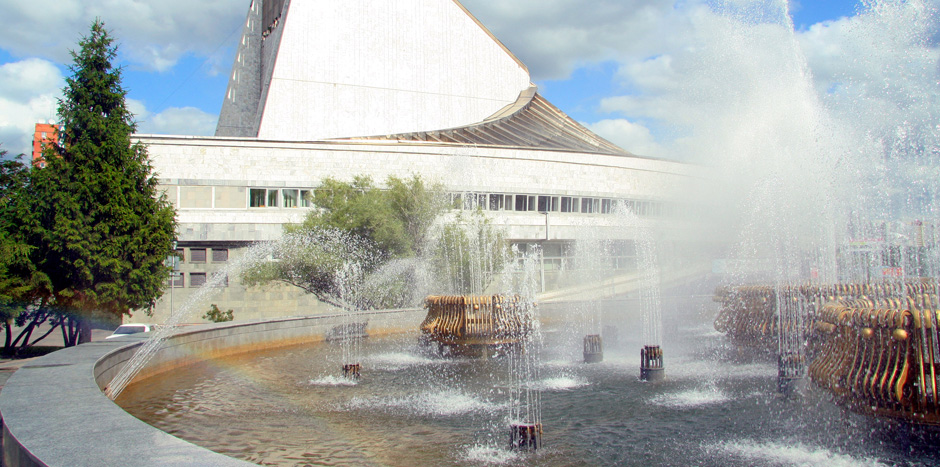General Information
Novosibirsk is the third largest city in Russia in terms of population. The resident population as of January 1, 2024, is 1,633.9 thousand people (58.5% of the total Novosibirsk Region population).

As of January 1, 2024, the city spans an area of 502.7 sq. km and has a population density of 3.2 thousand people per 1 sq. km. Novosibirsk is situated at the junction of the forest-steppe and forest natural zones, on the Priobsk plateau, adjacent to the Ob river valley, and at the intersection of key transportation corridors, traditionally used for economic connections between Russian regions, both in the east-west direction (R-254 Irtysh federal highway and R-255 Siberia federal highway) and in the north-south direction (R-256 Chuisky Tract federal highway and the navigable Ob River).
The distance from Novosibirsk to Moscow is 3,191 km.
The natural conditions in the area are favorable for the city development. The natural forest areas, Ob water-storage basin, and small rivers and lakes which lie adjacent to the city all form a diverse complex of recreational resources. The climate in Novosibirsk and its suburbs is continental. According to agro-climatic zoning, Novosibirsk is a moderately warm and insufficiently humid agro-climatic subregion. The average annual air temperature is +0.2ºC, with the average temperature in July being +19ºC and −19ºC in January.
Novosibirsk was originally established in 1893 as a settlement for builders working on the construction of a railway bridge across the Ob River. The impetus for its development was the construction of the Trans-Siberian Railway.
In less than 70 years, Novosibirsk’s population reached over a million people. It remains the fastest growing city in the world to this day, for which it has been included in the Guinness Book of Records. Novosibirsk has been the administrative center of the Novosibirsk Region since September 28, 1937, and the center of the Siberian Federal District since May 13, 2000.

In 2020, Novosibirsk was awarded the title “City of Labour Valour” for uninterrupted production of military and civilian products at industrial enterprises located in the city and for the total labour heroism during the Second World War. In 2022 a memorial stelae “Novosibirsk — the City of Labour Valour” was installed in the city’s Kalinin Square. The stelae became the highest of the similar memorials installed around the nation in 2021 and 2022. The height of this monument is 35 meters from roadway level, including 26 meters-high steeple, 4.5 meters-high pedestal and 4 meters-high barrow. The total weight of the monument is about 40 tons.
Present-day Novosibirsk is the business, trade, financial, scientific, industrial and cultural center of the Asian part of Russia. It accommodates the Office of the Presidential Plenipotentiary Envoy to the Siberian Federal District, the representative area Office of the Russian Ministry of Foreign Affairs, the Siberian Customs Administration, representative offices of other federal authorities and agencies, and headquarters of interregional organizations.
The city is divided into eight administrative districts — Dzerzhinsky, Kirovsky, Kalininsky, Leninsky, Oktyabrsky, Pervomaisky, Sovetsky districts and Central Borough. The largest of these in terms of population are Leninsky district — 316.3 thousand people (19,3% of the city population) and Central Borough — 285.3 thousand people (17,4%). In terms of territory the largest districts are Sovetsky District (87.5 sq.km) and Central Borough (84.2 sq. km)
Novosibirsk is the center of the Novosibirsk Agglomeration, which incorporates settlements that are economically, socially, and territorially interrelated with Novosibirsk and located up to an hour and a half away from its downtown district. The agglomeration’s population exceeds 2 million people and accounts for more than three-quarters of the Gross Regional Product of the Novosibirsk Region. It also sets virtually all development trends of the regional economy. The following settlements are parts of the agglomeration: Berdsk, Iskitim, Ob, urban-type settlement Koltsovo, the Novosibirsk rural district, as well as a number of other regional districts adjacent to Novosibirsk, including Iskitimsky, Kolyvansky, Kochenevsky, Moshkovsky, Ordynsky, Toguchinsky districts. The social aspect of the Novosibirsk Urban Agglomeration settlements’ interaction is characterized by low territorial segmentation of the labor market and by objective trends for formation of a single labor market in adjacent areas.
In this regard, a significant role is played by people commuting between the regional center and agglomeration settlements for work as well as for cultural, trade, educational, and other purposes. Through commuting, Novosibirsk’s population daily increases by at least 80 to 100 thousand people.
There are people of over 145 nationalities residing in Novosibirsk, with Russians accounting for most of the population (over 94%). The largest ethnic groups are Ukrainian, Uzbek, Tatar, German and Tadjik. In addition, the city is home to the Armenians, Kyrgyz, Azerbaijanis, Belarusians, Kazakhs, Koreans, Yezidis, Jews, Chinese, Gypsies, Tuvinians, Buryats, Chuvashes, Georgians and representatives of other nationalities. The city has over forty registered national and cultural autonomies and organizations.
Economy
Novosibirsk’s economy is based on industry, trade, transport, science, and scientific services. The city is undergoing successful development despite the absence of large resource-extraction enterprises in the region, making it unique among most large Siberian cities.
There are about 70 thousand enterprises and organizations and about 60 thousand individual entrepreneurs operating in the city. More than 640 thousand people are engaged in the city’s economy, over half of which are employed at large and medium enterprises, and about a quarter at small and micro-sized enterprises.
Industry
The city’s production system is based on over 220 large and medium production enterprises as well as on about 700 small industrial enterprises which account for 60% of the regional output of industrial products and services. Every fifth employee of enterprises and organizations of the city works in industrial production.
Novosibirsk’s industrial complex is oriented at processing and science-intensive industries. The key industrial branches include food industry, power industry, engineering industry, transport industry, metal working, and chemical industry. Novosibirsk is currently one of the leading suppliers of nuclear fuel to the Russian and global nuclear power stations and research reactors.
Over the five years (from 2019 to 2023), Novosibirsk’s industrial production has increased by more than 60% in value terms with an annual average growth of about 115%. This growth was contributed to by the branch of Public Joint-Stock Company “United Aircraft Corporation”, Novosibirsk Aircraft Plant named after Valery P. Chkalov, Research Institute of Measuring Instruments — Novosibirsk Comintern Plant, Novosibirsk Aircraft Repair Plant, Public Joint-Stock Company “Siblitmash”, Novosibirsk Metallurgical Plant named after A.N. Kuzmin, Novosibirsk Instrument-Making Plant, Research and Production Association “Elsib”, and others. The enterprises are engaged in production modernization, capacity upgrading, introduction of modern technologies and development of new products.
Transport
Novosibirsk is the largest transport hub in Western Siberia, situated at the intersection of major traffic arteries, including the Trans-Siberian Railway. It also has railway access to Central Asia.
The city has four railway stations, including Novosibirsk-Glavny — the largest train station east of the Urals. Novosibirsk accommodates the largest Russian sorting depot where a record number of shipments may be received and handled.
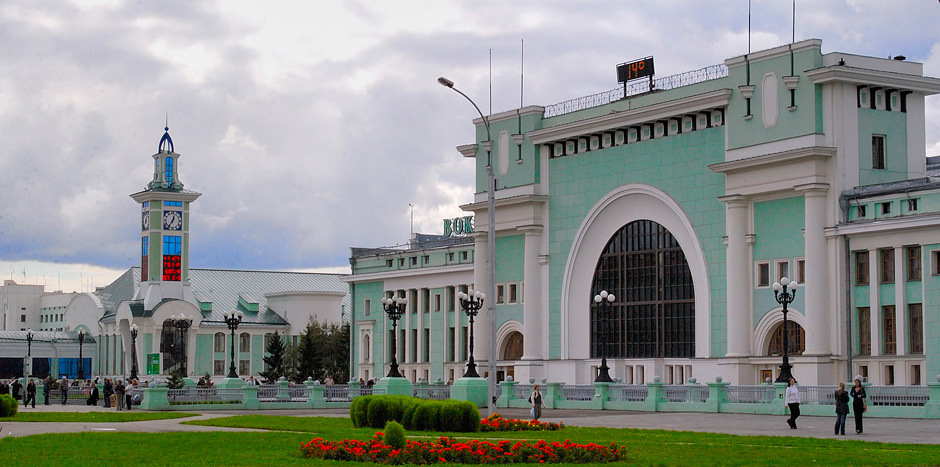
Airlines link Novosibirsk to more than 90 cities in Russia and worldwide. Novosibirsk International Airport named after Alexandr I. Pokryshkin (Tolmachevo Airport), being one of the most intensively developing airports in Russia and one of the largest transit hubs connecting Europe and Asia, is located in the Urban Agglomeration (17 km from Novosibirsk’s center, in Ob City, Novosibirsk Region). Base air carrier of the airport is S7 Airlines Company. In 2023, total passenger traffic was more than 9 million people and cargo traffic was more than 28.5 thousand tons. In February 2023, a new passenger terminal with the capacity of almost 2 thousand passengers per hour and annual passenger traffic of over 12 million people was officially opened.
There are three motor roads of federal significance passing through Novosibirsk: R-254 Irtysh (from Chelyabinsk via Kurgan and Omsk to Novosibirsk), and R-255 Siberia (from Novosibirsk via Kemerovo and Krasnoyarsk to Irkutsk) and R-256 Chuisky Tract (from Novosibirsk via Biysk, Gorno-Altaysk to the Mongolian border).
The urban passenger transport includes buses, trolleybuses, trams, taxicabs, shuttle taxicabs and a subway. All types of public passenger transport are equipped with an automated accounting and cashless fare system. Regular passenger transportation is organized on 143 lines (a total length of the city route network is over 2.6 thousand km). There are 10 tram lines (108 vehicles), 13 trolleybus lines (185 vehicles), 120 bus lines (over 1 380 vehicles). Novosibirsk’s subway, being the first and only subway in the eastern part of the country, was opened in early 1986. Currently, it has two active lines with 13 stations and a total length of 15.9 km. The metro bridge with a total length of 2 145 meters is the longest of its kind in the world.
Construction
In 2007, the General Urban Plan and local town-building design norms were approved. These documents helped to enhance the efficiency of urban area use significantly. In 2021, to implement Strategy of Socio-Economic Development of the City of Novosibirsk for the period until 2030, the General Urban Plan was updated to establish areas for further development of the city for the next ten years.
There is an active construction of social and administrative, sports and recreation, cultural and entertainment facilities in the city.
Novosibirsk is among the leading Russia’s cities in terms of commissioning the greatest volume of new housing. Since 2010, more than 1 million sq. m. of new housing are annually commissioned. Over the past ten years, the total area of new housing reached 13,704 thousand sq. m. and it is the highest increase in volume of new housing compared to other cities with a million-plus population in the Russian Federation (excluding Moscow and Saint Petersburg).
In addition, the city is implementing programs to reconstruct and upgrade the housing stock and resettle citizens from dilapidated and unsafe housing. During the programs’ implementation (from 2004 to 2023) citizens from 676 dilapidated dwellings were resettled. In 2023, Novosibirsk reached a record number of resettled citizens with more than 900 families resettled from 89 dilapidated dwellings. This work will continue into

Over the past ten years, 53 new kindergartens with a capacity of almost 11 thousand children and 19 schools with a capacity of more than 13 thousand students were constructed in Novosibirsk.
Trade and Service
Trade is one of the most significant elements of Novosibirsk economy. In May 1993, Novosibirsk was admitted to the International Association of World Trade Centers. Novosibirsk’s consumer market is one of the key segments of life-support system of the city. It has a significant impact on economic stability and plays a significant part in the employment sector.
Wholesale and retail trade sectors engage more than 20 thousand companies with about 140 thousand employees. Trade network of the city includes more than 8 thousand companies, including about 5.2 thousand stationary retail facilities (excluding outlets located in shopping malls), 2.2 thousand nonstationary retail facilities, 3 retail markets with a lot of goods of all kinds. In 2023, according to data provided by the Novosibirsk statistics service, retail turnover of large and medium companies amounted to 368 billion rubles.
City’s consumer market includes various formats of retail businesses such as shopping, shopping and entertainment, multi-format centers, and others.
International trading chains such as Leroy Merlin, Auchan, Metro Cash & Carry have been successfully operating in Novosibirsk for many years. Average provision of the population with retail space is 1,800 square meters per 1,000 residents. Russian chains of supermarkets such as Pyaterochka, Lenta, Magnit, Yarche, Mariya-ra continue to develop. The number of local and national trade enterprises such as Torgovaya Ploschad, Karasuk, Oktyabrskaya Poultry Plant, Novosibirskaya Poultry Plant, Kochenevskaya Poultry Plant, “Novosibirskaya” Chocolate Factory, Naslazhdenie, trading houses “Dudnik” and “Priz” continues to rise.
The largest Siberian exhibition complex, the Novosibirsk Expocenter, hosts international and Russian sectoral exhibitions and forums.
Novosibirsk is one of the largest regional wholesale hubs in Russia. An industrial and logistics park with a total area of 2,000 ha has been set up within 12 kilometers of Novosibirsk. City’s large trade and logistics complexes include wholesale and retail trade centers “Nordmall” and “Fudsib”, retail complex “Vostok”, focused primarily on retailers, medium and large wholesalers.
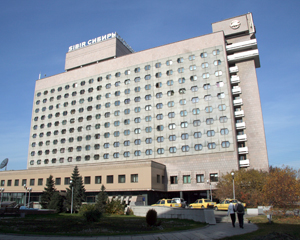
City’s public catering sector has a significant share of city’s economy and includes about 2 thousand food service establishments with 110 thousand seats. In 2023, according to data provided by the Novosibirsk statistics service, turnover of large and medium food service establishments was about 9 billion rubles and growth rate came to 108%. About 10 thousand people are engaged in this sector.
Consumer services sector is composed of more than 3.5 thousand companies with collection outlets and affiliate offices. A significant part of the sector is occupied by hairdressing services (30%), vehicle repair and maintenance services (10%) and repair and making of textile, fur and leather products (7%).
Science
Novosibirsk is the largest academic and applied science center in the Asian part of Russia. Science and technology complex of the city, being the third largest in Russia, includes 43 research institutes, 7 international research centers, Technopark of the Novosibirsk Academgorodok (Academy Town), Innovation Medical and Technology Center (Medical Technopark).
The Novosibirsk Science Center of the Siberian Branch of the Russian Academy of Sciences is the largest one within the Siberian Branch of the RAS — it accumulates close to 50% of the Branch’s scientific capacities. Novosibirsk academic scientific institutions incorporate leading scientific schools which make it possible to carry out applied research and development on the majority of existing technology platforms in Russia, including world-class technologies (catalysts, accelerators, lasers and laser-related devices, nanopowders, nanofibers, nanotubes, thermal and night vision devices, software, and others).
Over a hundred institutions in Novosibirsk carry out scientific research and development (93% of the total number of such institutions in Novosibirsk Region).
Novosibirsk has modern infrastructure for innovative activities, including the Science and Technology Center “Novosibirsk Technopark”. 317 resident companies with more than 10 thousand employees work in Technopark of the Novosibirsk Academgorodok (Academpark). Academpark has business incubators for instrument-making, IT-technologies, nanotechnologies, biotechnologies with more than 117 start-up resident companies.
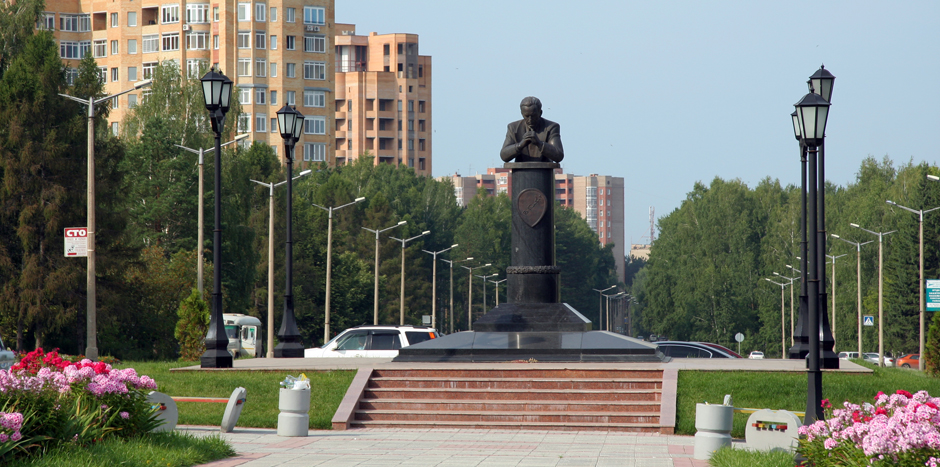
Education
Novosibirsk has a wide network of educational institutions. There are over 30 higher education institutions in the city, including branches of higher education institutions based in other cities and 40 specialized secondary schools.
Novosibirsk has 477 educational organizations including 473 educational institutions (208 general education institutions, 223 pre-school institutions and 42 supplementary education establishments) and 4 institutions of other kinds.
215.5 thousand pupils study at general education institutions in the city and 83 thousand children attend pre-school establishments.
The city is implementing a municipal program for development of educational sector of Novosibirsk for
Healthcare
The city has a sound network of healthcare institutions, which includes more than 70 hospitals with 18 thousand hospital beds and 240 outpatient and polyclinic institutions with a capacity of over 56 thousand visits per shift. There are over 13 thousand medical doctors specializing in all fields and about 18 thousand paramedical personnel providing medical care services to the city residents.
The city accommodates a number of federal and departmental healthcare institutions, including FGBI “Novosibirsk Scientific Research Institute of Traumatology and Orthopedics named after Ya.L.Tsivyan” (with a clinical unit), which is one of the leading industry research centers in the country providing highly specialized care for patients with disorders of the musculoskeletal system, central and peripheral nervous system; FGBI “National Medical Research Center named after academician E. N. Meshalkin” (with a clinical unit) — one of the largest national cardio-surgical institutions, Novosibirsk Branch of the Federal Interbranch Scientific and Technical Complex Eye Microsurgery named after academician S. N. Fedorov, Railroad Clinical Hospital and others.
Culture
Novosibirsk has the official tourist portal with a calendar of events held in Novosibirsk all year round: https://welcome-novosibirsk.ru/. English version of this web-site provides all the necessary information about tourism in Novosibirsk: https://welcome-novosibirsk.com/
Today, Novosibirsk is considered the cultural center of Siberia and one of the cultural centers of Russia. There are numerous creative unions and associations operating in the city and a developed network of cultural institutions. These institutions are represented by 10 theatres, including the Novosibirsk State Academic Opera and Ballet Theatre — the historical and architectural symbol and hallmark of not only Novosibirsk, but all of Russia and Siberia; Krasny Fakel (Red Torch) Academic Theatre; the Globe Academic Youth Theatre, Musical Theatre and City Drama Theatre led by S. Afanasyev.
The city has a State Circus, which admits 2 300 spectators.
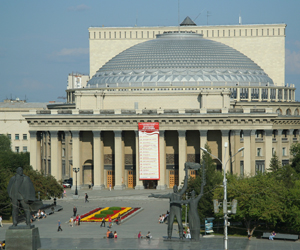
The city’s musical life is led by the Novosibirsk Philharmonic Society, which has been operating since 1937, and which unites about two dozen communities, many of which are well-known outside of Russia. These include the Novosibirsk Academic Symphony Orchestra, Russian Academic Orchestra, chamber choir, chamber orchestra, Filarmonica quartet, Pavel Sharomov’s Vocal Ensemble , Insula Magica Early Music Ensemble, Markell’s Voices choir, concert brass band, Siberian Dixieland jazz band, Vladimir Tolkachev’s Big Band, and others. Arnold Kats State Concert Hall, opened in 2013, is the main concert and rehearsal venue of the Philharmonic Society with the total area of 21.5 thousand sq. m. and 965 seats.
Over the years of its existence, the Novosibirsk State Conservatory named after M.I. Glinka has trained several thousand musicians, including performers, composers, and music experts. Today, it is one of the leading conservatories in the country and is recognized internationally.
The city’s points of interest include Zoological Park, Botanic Garden, Sibir-Hokkaido Municipal Centre, two planetariums — Planetarium of Siberian State University of Geosystems and Technologies and Large Novosibirsk Planetarium that, in 2023, was named after Novosibirsk-born astronaut Anna Kikina.
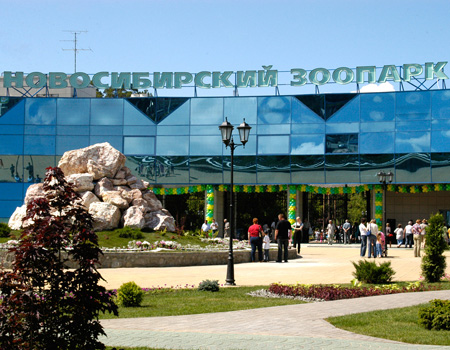
The Novosibirsk Zoo named after R.Shilo spans the area of 65 ha and accommodates more than 11 thousand specimens of 770 animal species, including over 350 rare and endangered animal species listed in the International Red Book, the Red Data Book of Russia, and the Red Data Book of Novosibirsk Region.
On the territory of the Zoo, there is the Center of Oceanography and Marine Biology “Delfiniya”, which is a unique facility for Siberia. Total area of the Center’s halls exceeds 8 thousand sq. m. and it admits 650 visitors simultaneously. There is an Oceanarium, which boasts a tunnel that runs through the aquarium with more than 300 species of fish and marine animals.
In 2016, Aquapark “Aquawolrd” was opened — the biggest indoor water park in Russia. In the Kalininsky district of Novosibirsk there is wellness center “Mira Termy” — an urban one-day resort.
The city’s attractions also include more than a dozen museums, including Novosibirsk State Art Museum, Museum of Novosibirsk, Novosibirsk State Museum of Local History and Nature, Nikolay Roerich Museum, Museum of the Railway Technology, Museum of Science and Technology of Siberian Branch of the Russian Academy of Sciences, Museum of World Funeral Culture, and others. The house museum of Yuri Kondratyuk, one of the founders of Russian astronautics, is under reconstruction.
